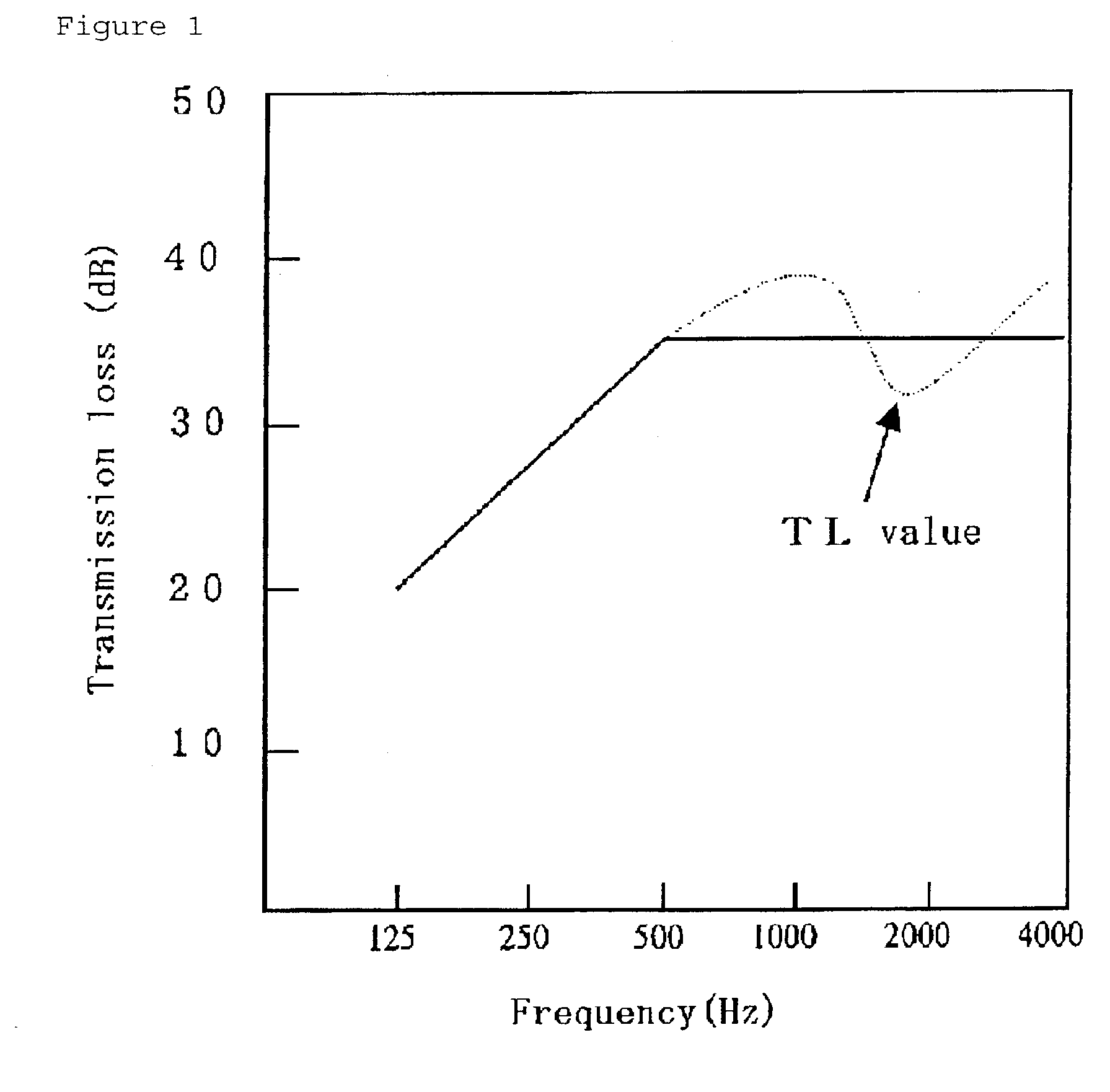Interlayer film for laminated glass and laminated glass
- Summary
- Abstract
- Description
- Claims
- Application Information
AI Technical Summary
Benefits of technology
Problems solved by technology
Method used
Image
Examples
example 2
[0136] In the first place, a PVA having an average polymerization degree of 2,000 was blended with 30 weight % of a PVA having an average polymerization degree of 3,500. From this PVA blend, a poly(vinyl butyral) resin having a butyralization degree of 63.3 mol % and an acetyl group content of 14.3 mol % was synthesized. Using this resin, an interlayer film for a laminated glass and a laminated glass were fabricated in the same manner as in Example 1.
example 3
[0137] In the first place, a PVA having an average polymerization degree of 2,400 was blended with 30 weight % of a PVA having an average polymerization degree of 4,200. From this PVA blend, a poly(vinyl butyral) resin having a butyralization degree of 63.3 mol % and an acetyl group content of 14.4 mol % was synthesized. Using this resin, an interlayer film for a laminated glass and a laminated glass were fabricated in the same manner as in Example 1.
example 4
[0158] (Preparation of Layer (A))
[0159] To a poly(vinyl butyral) resin (butyralization degree=68.9 mol %, acetylation degree=0.9 mol %; PVB) was added 39 weight parts (relative to 100 weight parts of the resin) of triethylene glycol di-2-ethylhexanoate (3GO) as plasticizer.
[0160] The mixture was thoroughly kneaded on a mixing roll and a predetermined amount of the kneaded mass was transferred to a molding press and held at 150.degree. C. for 30 minutes, whereby a 0.2 mm thick layer (A) was obtained.
[0161] (Preparation of Layer (B))
[0162] In the first place, a poly(vinyl alcohol) (PVA) with an average polymerization degree of 1,700 was used to synthesize a PVB resin with a butyralization degree of 64.5 mol % and an acetylation degree of 14.3 mol %. To 100 weight parts of the PVB resin so synthesized was added 60 weight parts of the plasticizer 3GO and the mixture was thoroughly kneaded on a mixing roll. The kneaded mass was transferred to a molding press and held at 150.degree. C. fo...
PUM
| Property | Measurement | Unit |
|---|---|---|
| Angle | aaaaa | aaaaa |
| Angle | aaaaa | aaaaa |
| Temperature | aaaaa | aaaaa |
Abstract
Description
Claims
Application Information
 Login to View More
Login to View More - R&D
- Intellectual Property
- Life Sciences
- Materials
- Tech Scout
- Unparalleled Data Quality
- Higher Quality Content
- 60% Fewer Hallucinations
Browse by: Latest US Patents, China's latest patents, Technical Efficacy Thesaurus, Application Domain, Technology Topic, Popular Technical Reports.
© 2025 PatSnap. All rights reserved.Legal|Privacy policy|Modern Slavery Act Transparency Statement|Sitemap|About US| Contact US: help@patsnap.com

